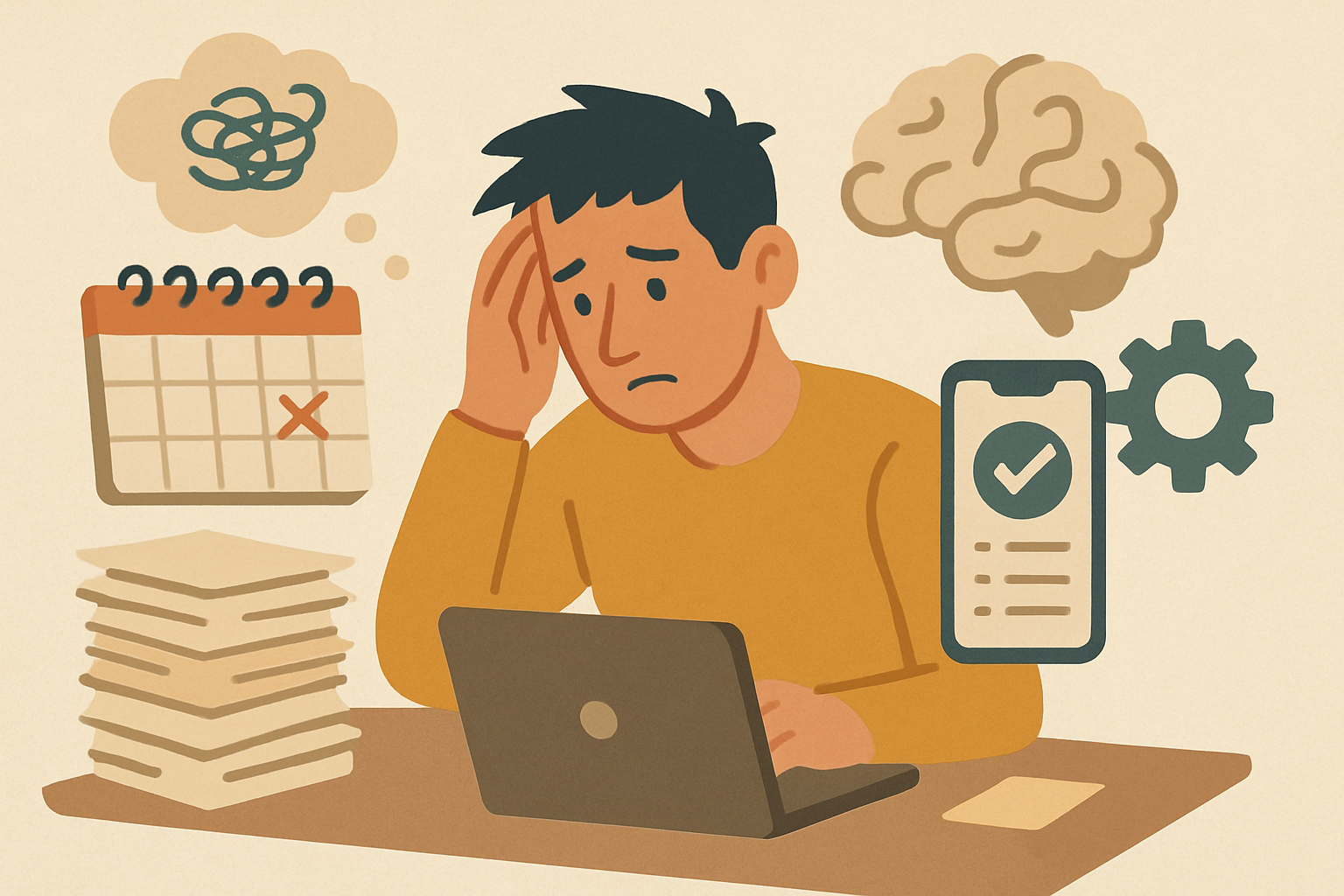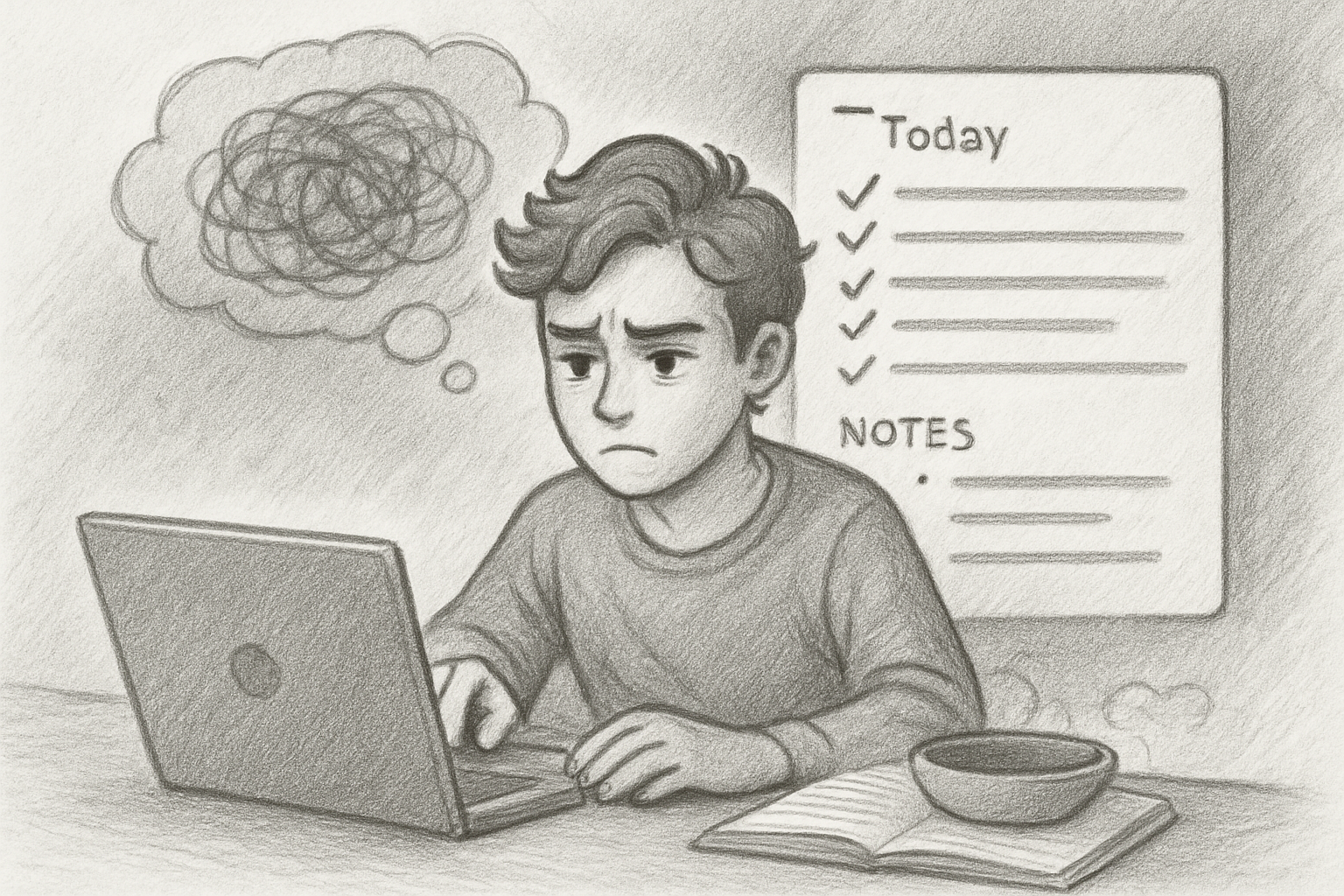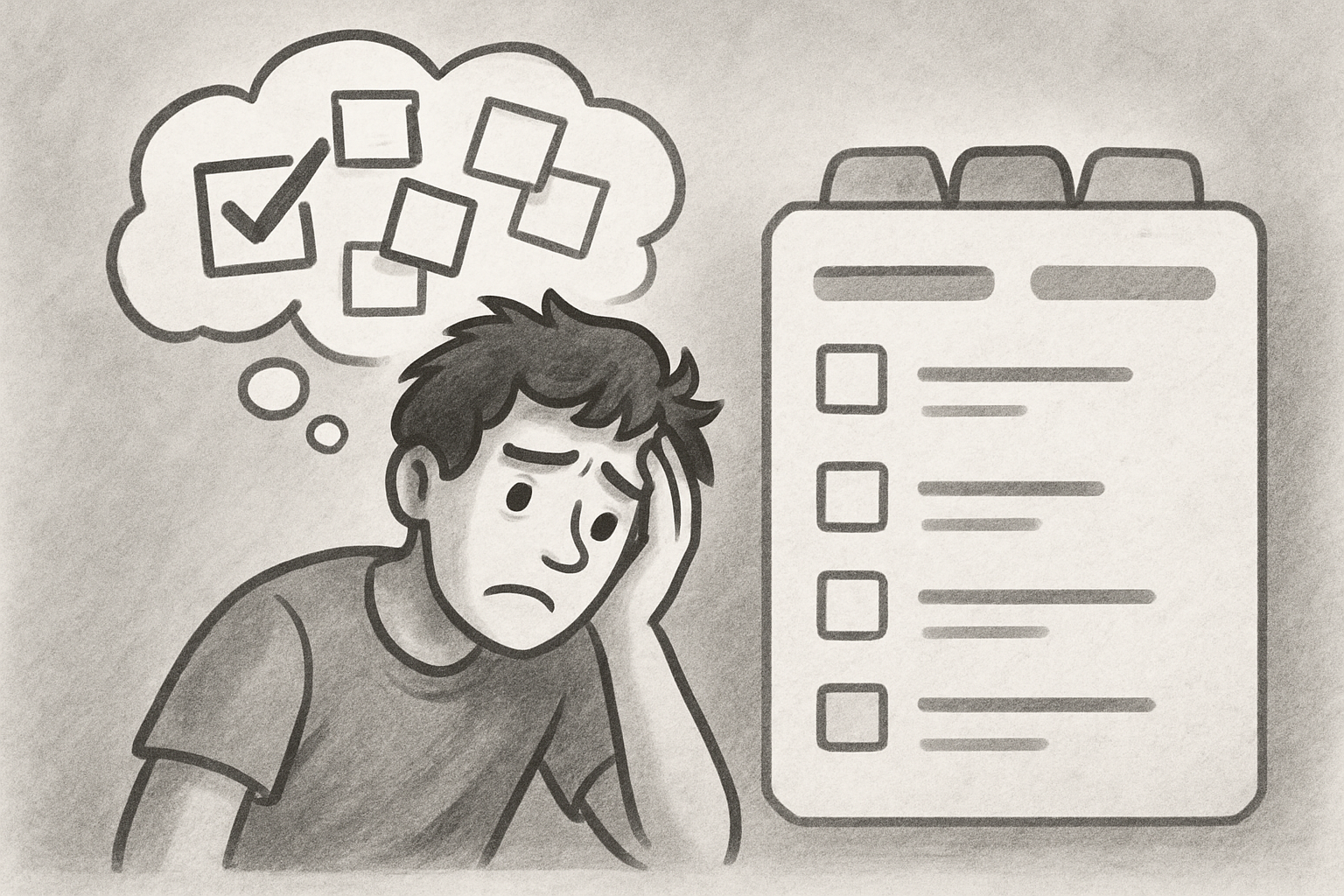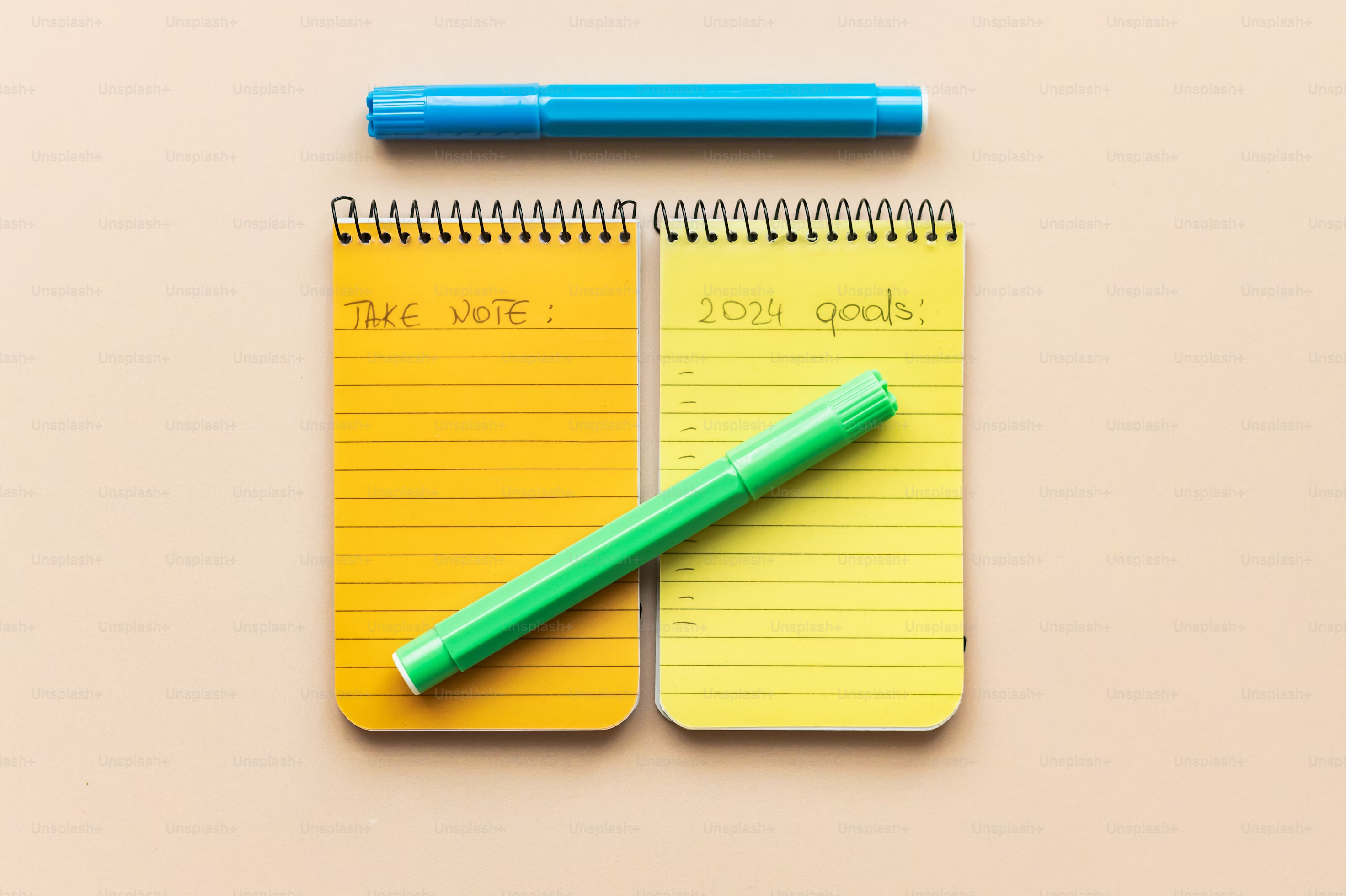A Guide to Prioritizing for the ADHD Mind
Does your to-do list cause more anxiety than action? This guide explores the link between ADHD and task paralysis, offering simple, evidence-based strategies to prioritize with confidence and overcome overwhelm.
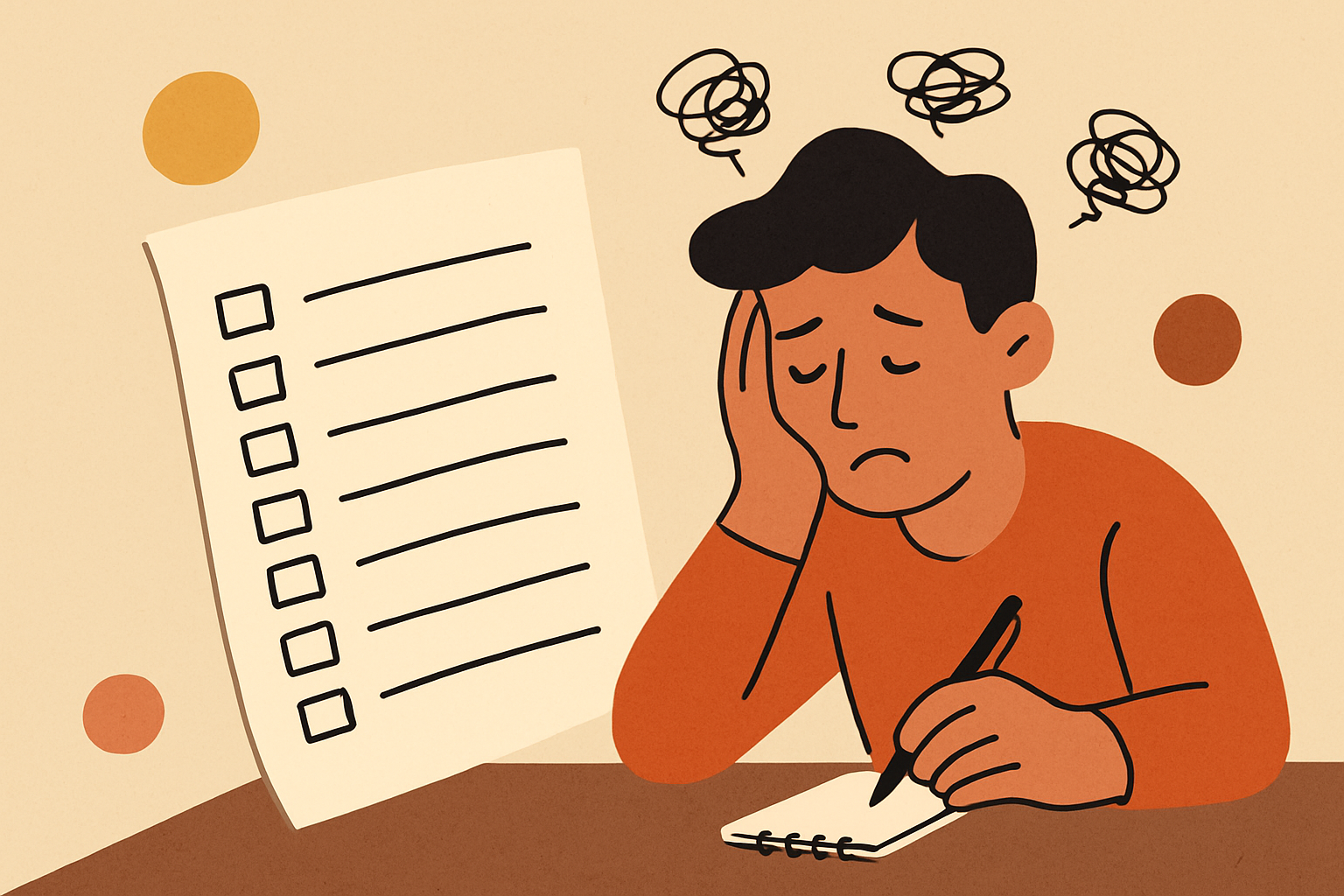
Beating To-Do List Paralysis: A Guide to Prioritizing for the ADHD Mind
Ever stare at your to-do list, feel your chest tighten, and then... do absolutely nothing? This feeling of being frozen by tasks is a real phenomenon known as task paralysis. It’s especially common for individuals with ADHD, where executive function challenges can turn a helpful list into a source of overwhelming anxiety.
This guide will dive into the science behind why this happens and arm you with practical, evidence-based strategies and tools to cut through the noise, prioritize with confidence, and finally overcome that feeling of being stuck.
Understanding ADHD Task Paralysis: It's Not Laziness, It's Neuroscience
The ADHD brain operates differently. Executive functions—the mental skills for planning, organizing, and initiating tasks—are often impacted. When faced with a long list, the brain can become overloaded, triggering what experts at Psych Central call an "ADHD freeze"—an involuntary response to a perceived threat or overwhelm.
Crucially, this is not the same as procrastination. As ADHDAvisor.org clarifies, ADHD paralysis stems from neurological factors, not a lack of willpower. It's the gap between intending to do a task and being physically or mentally unable to start. This is often linked to dopamine imbalances, which, as the Cleveland Clinic notes, can reduce motivation and make it hard to get started. The result is a cycle of anxiety, shame, and frustration that only makes the paralysis worse.
A survey by Thrive With ADD revealed that a staggering 68% of adults with ADHD experience task paralysis due to overwhelm, with 38% citing an inability to prioritize as a primary cause.
Understanding these underlying mechanisms—that this is a biological response, not a personal failing—is the first step toward finding effective, compassionate solutions.
Common Pitfalls in Prioritization for ADHD Minds
Traditional prioritization methods often backfire for ADHD brains because they don't account for these neurological differences. Common traps include:
Trying to prioritize too many things at once: A list of 20 "priorities" is just a list of stressors.
Time blindness: The inherent difficulty in estimating how long tasks will take can derail even the best-laid plans.
Gravitating toward easy, low-impact tasks: This creates an illusion of productivity while important goals languish.
Rigid planning: Plans that don't account for fluctuating energy levels or unexpected distractions are designed to fail.
Many complex prioritization methods are too abstract or demanding, ironically becoming another source of overwhelm. The key is to simplify and work *with* your brain, not against it. For an excellent resource on reducing overwhelm, Unconventional Organisation offers practical steps to externalize working memory load.
Practical Strategies to Simplify Prioritization
The path to beating task paralysis lies in simplifying the process and using strategies adapted for the ADHD brain. Here are some actionable, evidence-backed approaches:
The 'Top 3' Rule: Don't tackle everything. At the start of your day, identify just 1-3 truly critical tasks. These are your non-negotiables. This strategy is supported by evidence-based interventions focusing on simplifying workflows.
Break It Down: Large tasks trigger overwhelm. As recommended by Medical News Today, break them into tiny, manageable steps. "Write report" becomes "Open document," "Outline sections," and "Write one paragraph." The first step becomes less intimidating.
Time Blocking/Energy Blocking: Instead of just listing tasks, assign them specific time slots on your calendar. Even better, schedule tasks according to your energy. Tackle complex work during your peak hours and save simple tasks for energy dips.
The ADHD-Friendly 'Urgent vs. Important' Matrix: This classic tool helps you categorize tasks.
For ADHD, simplify it: focus only on the "Urgent & Important" quadrant—these are your Top 3. Then, schedule the "Important but Not Urgent." Don't get bogged down trying to manage the rest. I'm Busy Being Awesome provides great adaptations of this for ADHD.
Gamify Your Tasks: Turn chores into a game to make them more engaging. Set a timer and race against it, or use an app that turns tasks into quests. Research shows that gamification can enhance behavior and task initiation for those with ADHD.
Use a Body Double: Work alongside another person, either in person or virtually. This creates gentle social pressure and accountability. Platforms like Focusmate connect you with virtual co-working partners, a technique proven to help with focus and task completion.
Adjust Your Environment: Create a workspace tailored to your sensory needs. As research suggests, reducing visual complexity and distractions can significantly improve task performance for those with ADHD symptoms. Consider noise-canceling headphones, better lighting, or fidget tools.
Just Start (The 2-Minute Rule): The biggest hurdle is initiation. Pick the smallest possible first step of a task and commit to doing it for just two minutes. This momentum is often enough to break the paralysis and keep you going.
Using the Right Tools to Support Your Prioritization Workflow
The right tools don't fight your ADHD brain; they accommodate it. Recent advances emphasize digital tools tailored for neurodivergent users. A tool like Yaranga is specifically designed to simplify task management and note-taking for busy minds.
Yaranga combines notes and tasks, following a "capture first, organize later" philosophy. This is highly effective for the ADHD brain, which thrives on quick capture but struggles with rigid structures.
Here’s how Yaranga’s features directly address common prioritization pain points:
Quick Capture: Instantly add typed or voice notes with automatic transcription. This reduces the friction of getting ideas out of your head, ensuring great thoughts aren't lost.
Automatic Task Extraction: Yaranga automatically pulls tasks from notes and integrations with email, calendar, WhatsApp, and Telegram. This prevents tasks from getting lost in communication streams and slipping through the cracks.
Unified Space: Combining notes and tasks in one app minimizes context switching and supports your working memory by keeping everything in one place.
Simplified Organization: Yaranga's Smart Tagging Without Folders helps you structure information intuitively without the overwhelm of complex folder hierarchies.
Highlighting Priorities: Visually emphasize key tasks to make them stand out from a long list, helping you focus on what truly matters.
Yaranga also offers team collaboration tools, useful for managing shared projects. This focus on simplifying organization through intelligent automation makes Yaranga a powerful ally for managing ADHD.
Considering how Yaranga helps users overcome these challenges, let's look at its plans:
Plan | Price | Key Features/Limits |
|---|---|---|
Free | $0 forever | Includes space for your first notes and projects, Task management essentials. |
Pro Plan | $5 per month | Unlimited notes, Unlimited projects, Advanced task management, Voice memos, Team collaboration, Mail/WhatsApp/Telegram integrations. |
For Early Adopters | $99 Lifetime Deal | All Pro features, plus the ability to vote on new features. |
For those looking to deepen their understanding of building a personalized system with Yaranga, check out their Getting Started Guide or a deep dive into smart tagging.
Building Your Personalized System
There is no magic bullet; the goal is to find what works for your specific ADHD profile. Be open to experimentation. Try the 'Top 3' rule for a week, then try body doubling. See what sticks and what helps you feel less overwhelmed.
Most importantly, be kind to yourself. Progress isn't linear. Acknowledging that task paralysis is a real, neurological challenge can help reduce feelings of shame and frustration. Celebrate small wins and adjust your approach as needed to build a sustainable system that supports you.
Conclusion: Taking Action, One Task at a Time
To-do list paralysis is a genuine, science-backed challenge for the ADHD mind, but it is entirely manageable. The power lies in simplification, consistently breaking down tasks, and embracing strategies and tools designed with neurodivergence in mind.
By implementing these approaches and exploring how a tool like Yaranga can simplify your workflow, you can regain control, reduce overwhelm, and transform your "don't-do" list back into an actionable "to-do" list. It’s about taking action, one manageable step at a time.
Further Reading & Sources
[1] Task paralysis: Symptoms, effects, and how to manage it (Medical News Today)
[2] ADHD Freeze: Understanding Task Paralysis (Psych Central)
[3] Feeling Stuck? Here's How To Overcome ADHD Paralysis (Cleveland Clinic)
[4] What Is ADHD Paralysis? An Expert's Deep-Dive (ADHDAvisor.org)
Survey on Task Paralysis in Adults with ADHD (Thrive With ADD)
Research: The Effect of Perceptual Load on Performance in People with ADHD Symptoms (arXiv.org)
Body Doubling and Other Strategies for ADHD Paralysis (Buoy Health)
